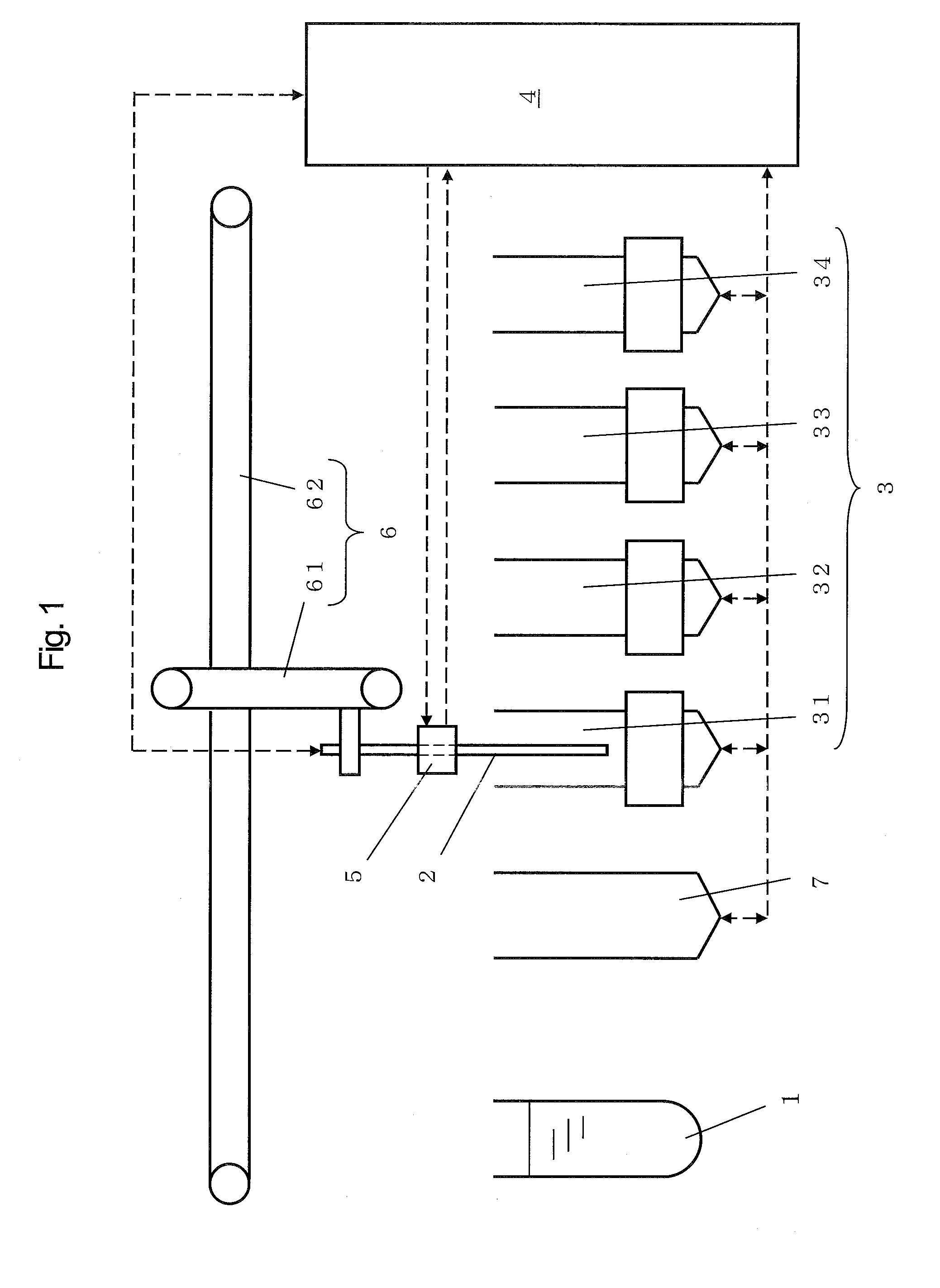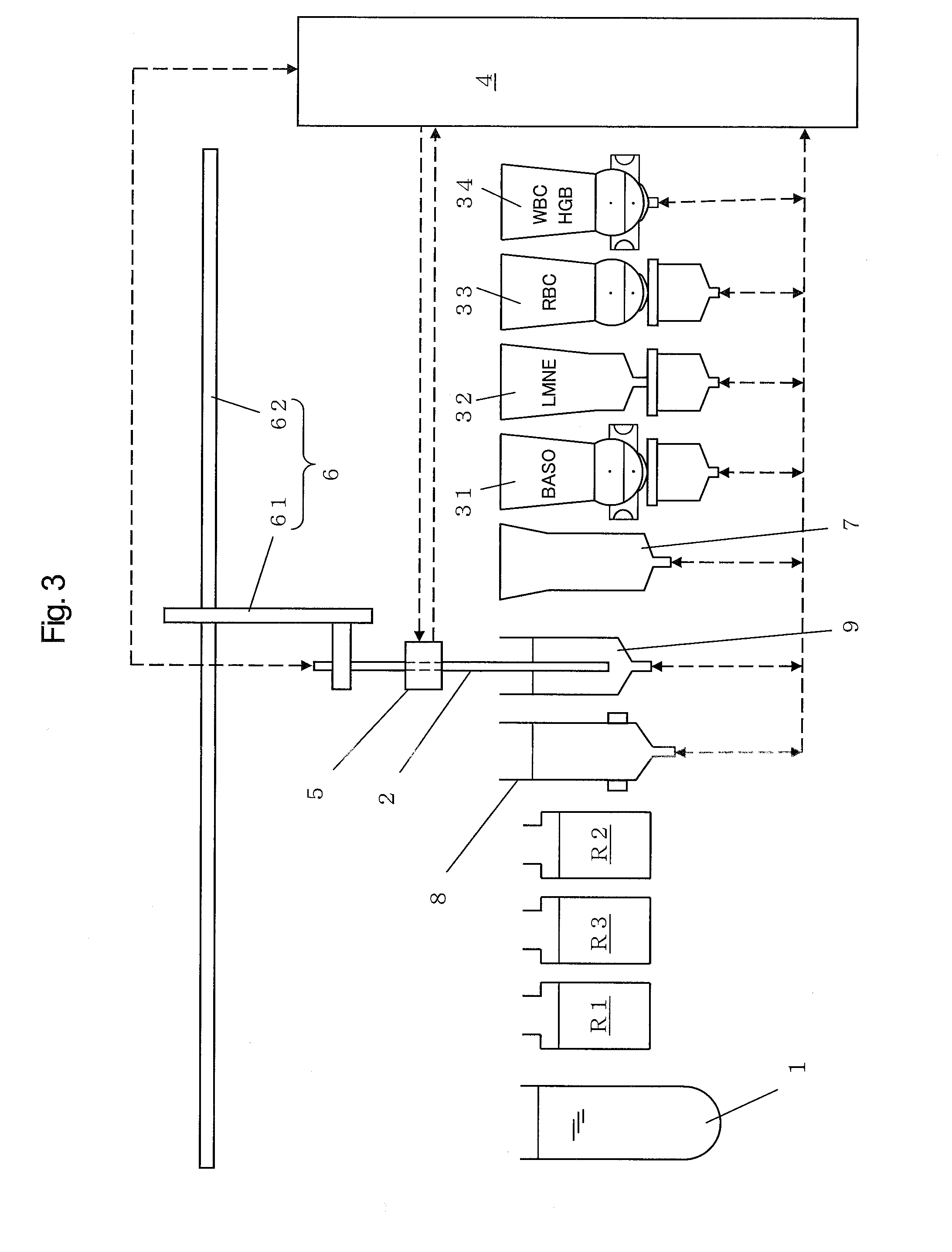Blood analysis apparatus
a technology of blood analysis and apparatus, which is applied in the direction of particle and sedimentation analysis, measurement devices, instruments, etc., can solve the problems of insufficient specimen-sucking amount, insufficient specimen-sucking amount development, and failure of the driving part to opera
- Summary
- Abstract
- Description
- Claims
- Application Information
AI Technical Summary
Benefits of technology
Problems solved by technology
Method used
Image
Examples
Embodiment Construction
[0051]The present invention takes note of the fact that the count data about the same particular (predetermined) blood cells are obtained in each exclusive blood cell counting part, wherein the blood specimen was dispensed. Using the respective count data, the ratio or number of the existing particular blood cells is calculated, and the calculation results are collated to detect whether the amount of the blood specimen sucked in the nozzle is normal or insufficient.
[0052]For example, a blood analysis apparatus for classification of white blood cells into 5 types is provided with a basophil counting part configured to have a BASO chamber 31; an LMNE counting part configured to have an LMNE chamber 32 and a flow cell (not shown); and a white blood cell counting part configured to have a WBC chamber 34 (which also performs HGB analysis), as shown in FIG. 1.
[0053]While basophils are counted in the basophil counting part, the count data include the data relating to the white blood cells ...
PUM
 Login to View More
Login to View More Abstract
Description
Claims
Application Information
 Login to View More
Login to View More - R&D
- Intellectual Property
- Life Sciences
- Materials
- Tech Scout
- Unparalleled Data Quality
- Higher Quality Content
- 60% Fewer Hallucinations
Browse by: Latest US Patents, China's latest patents, Technical Efficacy Thesaurus, Application Domain, Technology Topic, Popular Technical Reports.
© 2025 PatSnap. All rights reserved.Legal|Privacy policy|Modern Slavery Act Transparency Statement|Sitemap|About US| Contact US: help@patsnap.com



